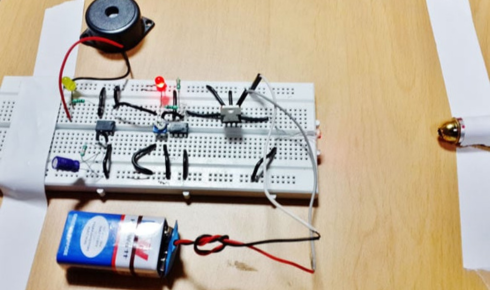In today’s world, combining education with practical technology is essential to spark curiosity and develop problem-solving skills. A laser security alarm is one such innovative project that introduces students and hobbyists to the fascinating world of electronics and security systems. When paired with an electric science kit, this project becomes an engaging and hands-on way to learn about circuits, sensors, and electronic components while having fun creating a functional device.
A laser security alarm is designed to detect any intrusion by using a laser beam and a sensor. When the beam is interrupted, the system triggers an alarm, alerting users to a potential breach. This type of project teaches students about light sensors, photodiodes, buzzers, and basic circuit design. By assembling a working model, learners gain practical knowledge about electronics and the fundamentals of security systems, making it both educational and exciting.
Electric science kits are ideal tools for building projects like a laser security alarm. These kits come with all the necessary components, such as resistors, LEDs, switches, wires, sensors, and batteries, along with detailed instructions for assembly. They allow students to experiment safely while understanding the principles of electricity, current, and voltage. By combining theoretical knowledge with practical application, electric science kits provide a comprehensive learning experience that enhances comprehension and retention.
One of the main advantages of using an electric science kit is that it fosters STEM (Science, Technology, Engineering, and Mathematics) education. Projects like a laser security alarm encourage critical thinking, problem-solving, and analytical skills. Students learn to troubleshoot circuits, adjust sensor sensitivity, and optimize the placement of components. This hands-on approach helps learners develop logical reasoning and confidence in handling electronic projects.
Another significant benefit is safety and convenience. Electric science kits are designed with young learners in mind, ensuring all components are safe to use and experiments are risk-free. Step-by-step guides simplify complex concepts, making it easy for beginners to start building projects without feeling overwhelmed. Moreover, many kits are modular, allowing students to progress from simple experiments to more advanced projects like automated alarms or robotics.
In addition to educational value, a laser security alarm project inspires creativity. Learners can experiment with modifications, such as adding multiple laser sensors, integrating an LED indicator, or connecting the system to a microcontroller for enhanced automation. This freedom to innovate encourages students to think beyond the instructions, develop their ideas, and apply electronics in real-world scenarios. Such projects instill a sense of achievement, motivating students to explore more advanced technology.
Collaborative learning is another advantage of electric science kits. Students often work in teams, sharing ideas, discussing solutions, and learning from one another. This not only improves communication and teamwork skills but also makes the learning process more enjoyable. Completing a project like a laser security alarm provides a tangible result, reinforcing the concepts learned and inspiring further experimentation.
When selecting an electric science kit, it is important to consider the learner’s age, interests, and skill level. Beginners can start with simple circuits and basic sensors, while more advanced students can tackle sophisticated projects, including laser security alarms, robotics, and automation systems. Investing in a high-quality kit ensures that students remain engaged, challenged, and motivated throughout their learning journey.
In conclusion, a laser security alarm project built with an electric science kit combines education, creativity, and practical application in a single engaging experience. By integrating theory with hands-on experimentation, these projects enhance understanding, develop problem-solving skills, and promote STEM education. Perfect for school projects, hobby learning, or competitive experiments, they inspire students to innovate, explore, and excel in the world of electronics and technology.

